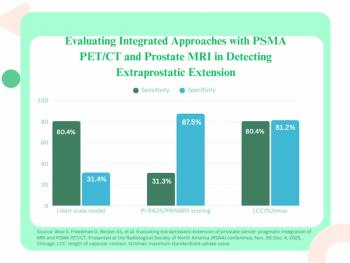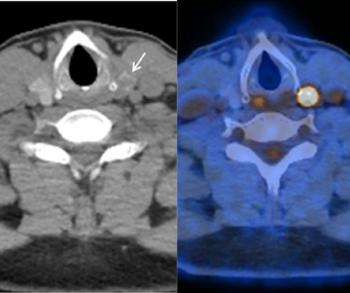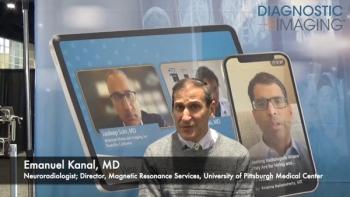
- Diagnostic Imaging Vol 32 No 9
- Volume 32
- Issue 9
Spectral CT IDs heart plaque better than conventional
Researchers can for the first time visualize coronary artery plaques vulnerable to rupture using spectral CT, an innovation that will lead to better and earlier diagnosis of cardiovascular disease, according to researchers.
Researchers can for the first time visualize coronary artery plaques vulnerable to rupture using spectral CT, an innovation that will lead to better and earlier diagnosis of cardiovascular disease, according to researchers.
Ruptured atherosclerotic plaques are the cause of nearly 70% of heart attacks. High-density lipoproteins (HDL) gravitate to plaques vulnerable to rupture and remove them from the arterial wall. Researchers from Mount Sinai in New York inserted tiny gold particles into HDL and injected mice with them. Using a spectral CT scanner from Philips Medical Systems, the researchers were able to see the gold particles as the HDL targeted microphages, thus illuminating the location of the vulnerable plaques.
Conventional CT doesn’t provide enough contrast to differentiate types and density of tissue. Spectral CT shows the effect of gold particles while also distinguishing calcium deposits and contrast agents. Together, this information is used to identify stenoses, thus helping define both the severity of atherosclerosis and heart attack risk.
Articles in this issue
about 15 years ago
Overlap shifts to help urgent findings communicationabout 15 years ago
MRI, MRS scans reveal who will lose weightabout 15 years ago
Cardiac MRI shows heart adaptations in triathletesabout 15 years ago
Sheryl Crow teams up with breast cancer centerabout 15 years ago
New meaningful use rules spell opportunity for radiologyabout 15 years ago
Meaningful use: The government's billion dollar gift to radiologistsabout 15 years ago
MSCT moves ahead of DSA for peripheral arterial diseaseabout 15 years ago
CT and MRI drive awareness of vascular liver disordersabout 15 years ago
In a disaster, Homeland Security has plans for youabout 15 years ago
In overutilization, some practices more culpableNewsletter
Stay at the forefront of radiology with the Diagnostic Imaging newsletter, delivering the latest news, clinical insights, and imaging advancements for today’s radiologists.



























